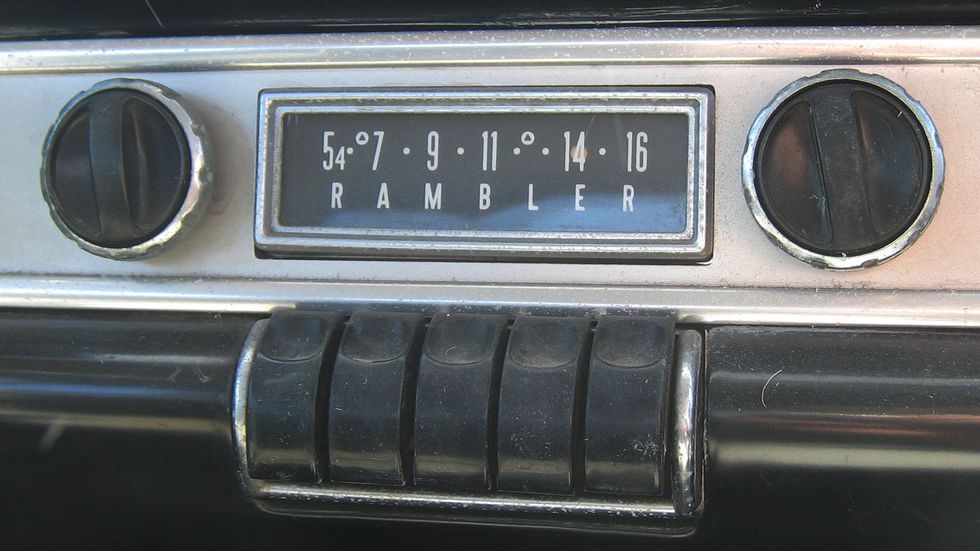The Unabomber - History’s Clairvoyant Villain
August 16, 2021
Maybe the Unabomber was right.
A statement to raise a questioning eyebrow. Not as controversial as “we all should have listened closer to Charles Manson,” or “you know, this country might be better off if those people on January 6 would have taken over the capital.” But worthy of a “What?!”
Let me explain.
For nearly twenty years, Ted Kaczynski launched a bombing campaign. The first of his sixteen explosive devices went off on May 25, 1978. The last on April 24, 1995. Some he mailed, others he delivered himself. The blasts killed six people and injured twenty-three.
His initial two bombs exploded on the campus of Northwestern University in Chicago. The first injured a university policeman, the second a graduate student. The FBI entered the investigation after he placed his third bomb in the cargo hold of an airplane. Thankfully it failed to explode and just released smoke. His tag, Unabomber, was a derivative of the FBI case name, Unabom.
Ted included false clues in the packages. At one point, the FBI thought his motive might revolve around nature, trees, or wood because of the presence of tree bark or branches in some of the bombs. His targets were a range of people without clear connections, including grad students, researchers, an advertising executive, and a computer store owner. This confounded investigators trying to determine a motive until his reasons became clear in the summer of 1995, when Kaczynski mailed a 35,000-word essay to media outlets.
The paper, titled Industrial Society and Its Future, became known as the Unabomber Manifesto. A screed against technology, the government, corporations, and leftists. The Unabomber said if the essay were published, he would cease the bombings. At first, the FBI was hesitant, worried it would encourage other terrorists, but decided it was in the best interest of public safety. The Washington Post and the New York Times printed it in September 1995, and Ted's brother, who already suspected his sibling might be the serial bomber, read it and recognized Ted in its narrative.
In April 1996, authorities arrested Kaczynski at his home in Lincoln, Montana. A ten-foot by fourteen-foot cabin without electricity and running water. Since 1971, Ted lived the life he wanted for others. Off the grid and off the land.
After refusing to allow his defense team to claim he had a mental illness, Ted plead guilty to all charges in exchange for life in prison without parole. I followed the story and didn’t think much about Ted until recently when a Netflix algorithm flagged a four-part series for me. Unabomber: In His Own Words.
A prodigy, he entered Harvard at age sixteen, where he earned a bachelor’s degree in math and went on to get a master's and a doctorate in the same subject from the University of Michigan. After graduating, he taught at the college level for a couple of years, worked some odd jobs, then moved to Montana. Kaczynski wanted to live absent any reliance on technology, believing that industrialized society was eroding human freedoms. His violence was a form of revenge against the system he despised.
In the docuseries, Bob Wood, the former warden of the supermax prison where Ted lives, said that if you took his name off the manifesto, put an academic name on it, and made it a course of study, it wouldn't be shocking. He said he isn’t influenced by any relationship he had with Ted. Wood observes that “writing is writing.” A lifelong student of writing, the statement resonated with me.
I never read the manifesto. I thought it was the ramblings of a madman. After watching the series, I employed the technology Ted hates, searched the internet, and learned some of his ideas are considered prescient by academics and included in course assignments. So, I read it.
And it’s disturbing. The warden is right. Without Kaczynski's name, you wouldn't hesitate to repeat as you read, "he's got a point."
According to Kaczynski, “Once a technical innovation has been introduced, people usually become dependent on it, so that they can never again do without it, unless it is replaced by some still more advanced innovation.” He wrote this before personal computers became as ubiquitous in our homes as televisions and before tablets and smartphones and all their applications wove their way into our lives. He follows this by saying that not only do we become dependent as individuals, but the "system as a whole becomes dependent on it" and keeps moving forward with more sophisticated technology.
While reading, you can't help but think about how technology has woven its way into our lives. Smart homes and cars. The invasive properties of cookie technology, social media, and algorithms that seek to influence what we read, where we shop, what we buy, and just like the Netflix code that sent me Ted’s way, what we watch. As the former warden described it - “It’s today on paper.”
While I was doing this research, Apple made an announcement. They plan to scan all United States iPhones for images of child sexual abuse. All. No notice. No asks for permission. It drew accolades from child protection groups. But many others raised privacy concerns and warned of the potential for abuse and expansion. Sexual abuse is a problem, and we should do everything we can to protect our children. But what about domestic violence? Murder? Or the type of terrorism and violence waged by individuals and groups like Ted Kaczynski? Shouldn’t we proactively search for evidence to protect society against these and other crimes?
The constitution's fourth amendment protects us from unlawful search and seizure of our persons, houses, papers, and effects. But corporations like Apple do as they please. Kaczynski saw this and said, “Technology repeatedly forces freedom to take a step back, but technology can never take a step back.” His solution? A revolutionary overthrow of the technological system, violent if necessary, and a return to the primitive lifestyle.
In the docuseries, Theresa Kintz, sociologist and former editor of an environmental advocacy journal, says Ted’s violence wasn’t the right way, but his writing was. She’s right. Seemingly indiscriminate bombings leaving people dead and maimed is a poor way to communicate. Forcing people to print your cogent but poorly edited thoughts in exchange for stopping the violence isn’t a good way to deliver your message either. A violent revolution isn’t the solution. During his reign of terror, Ted didn't have access to a broad audience. The irony is he would have benefitted from the platforms available today through the technology he abhorred.
History remembers Ted as the Unabomber, a domestic terrorist who murdered and maimed to strike out at a system he feared was destroying civilization. But there’s also a place to recognize his efforts to warn us that “all these technological advances taken together have created a world in which the average man’s fate is no longer in his own hands or in the hands of neighbors and friends, but in those of politicians, corporation executives, and remote, anonymous technicians and bureaucrats whom he as an individual has no power and influence.”
Maybe he was wrong. There are places for individual power and influence. We can deliver the message through a TikTok dance.
No. He was right.
Like what you read?
Subscribe to my mailing list and get notifications to your inbox when my next blog post goes live.
Contact Us
More By Joe



